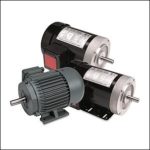Uses of whole body vibration machines in sports players
Written by:
Dewald, Published on: 06/10/2016
Whole body vibration machine exercises can speed up recovery after a sports competition by helping the muscles relax, relieving the tension and improving circulation and the elimination of extra water from the tissues. It’s also a proven solution for accelerating the recovery after a fracture, and may be useful in other types of injuries that are less severe, its beneficial effects helping the organism heal faster.
These aspects are important especially for athletes, who don’t always have enough days for recovery between two games or competitions. Although their body is adapted to an intense training routine, their muscles still need to relax and recover, and the tissues still need time without exercise for healing and regenerating themselves.
Warming up, cooling down and doing some PAP (post-activation potentiation) exercises before a game can help in improving performance and accelerating the post-workout recovery. Whole body vibration machines are versatile tools that can be used for all these purposes, from short warm-up sessions that increase the elasticity of muscles and prepare the joints for effort, to PAP exercises that are intense enough to help athletes perform better during the competition.
Although it may seem that sports players don’t need additional ways to train or recover, adding WBV to their regular program may be helpful, and we’ll take a look at some studies that support this statement. First, a research paper published by Norwegian scientists, who wanted to see whether vibrating machine exercises are good for preconditioning in hockey players.
For this study, they investigated the effects of whole body vibration exercises on the sprint performance of 15 professional male hockey players. The participants performed body-loaded half squats plus WBV prior to 20-m on-ice sprints, each test session consisting of 30 seconds of squats, then 2 sessions of vibration exercises at 3 mm amplitude and 50Hz of frequency. Two sets followed, with no vibration added to the routine.
These tests were performed in random order, on separate days, sprinting tests taking place 1 minute after the end of the preconditioning routine. Results showed that adding whole body vibration platform exercises to the preconditioning routine can result in superior sprint performance in the 10 m and 20 m tests, compared to the non-WBV preconditioning routines.
There was no significant difference between the well-being of the legs before and after the warm-up sessions in the non-WBV tests, but there was an improvement in the perceived well-being in the vibration tests, immediately after the preconditioning exercise. The conclusion was that in hockey players, adding WBV to preconditioning can improve the on-ice sprint performance.
This is just one study that suggests that whole body vibration may benefit athletes and should be considered as a solution for more effective warm-up, cool-down and training programs.
In another study done on volleyball and beach volleyball players, whole body vibration was found to be useful in increasing leg strength and jumping performance. In this case, the participants performed vibration exercises for 6 weeks. Participants were 23 male volleyball players with an average age of 21+ years, who were randomly divided into two groups, one with vibration training and the other with traditional strength training.
Vibration training increases strength, power and flexibility in trained and untrained athletes. As shown by Bosco, WBV can increase forearm flexors power by increasing neural efficiency, and can lead to a significant increase in velocity, power and force in the lower body of volleyball players. Issurin showed that whole body vibration can increase biceps strength in amateur athletes, and Cardinale found that squatting at 30Hz on a whole body vibration machine engages the muscles and produces the greatest response from the muscle fibers at frequencies around 30Hz.
Cochrane investigated the effects of WBV on flexibility, vertical jump performance and grip strength in elite athletes, and found that standing on a vibration platform can lead to an increase in the first two mentioned parameters. Also, Kinser investigated the effects of vibration training on explosive strength and flexibility in female gymnasts and found that mixing WBV with stretching exercises increases flexibility but doesn’t have any significant effect on explosive strength.
Finally, researchers from Iran showed that administered before eccentric exercise, whole body vibration may reduce delayed-onset muscle soreness via muscle function improvement. This means WBV could be added to regular training programs in athletes, for minimizing the muscle soreness and damage and making the warm-up and cool-down sessions more effective.
Have comments or questions? Post them below or join our Facebook community and share your thoughts with us there!




